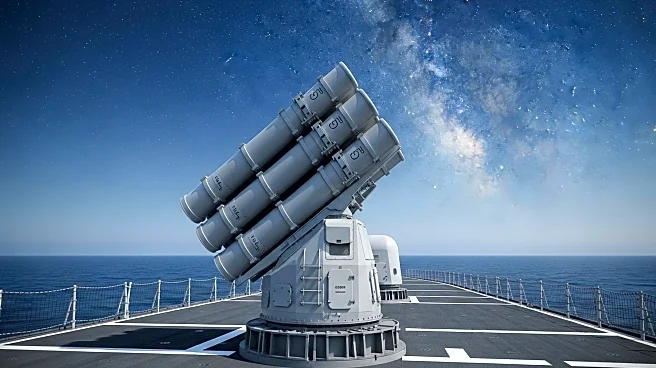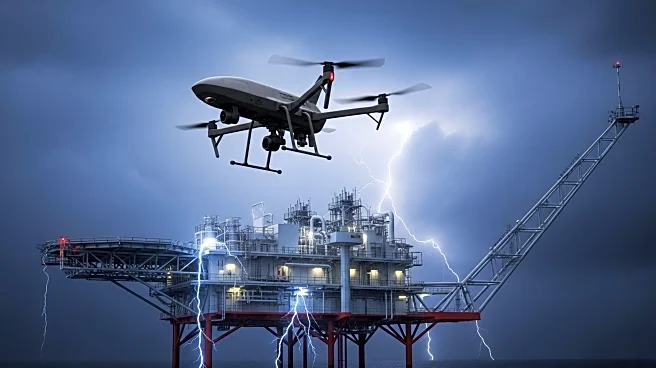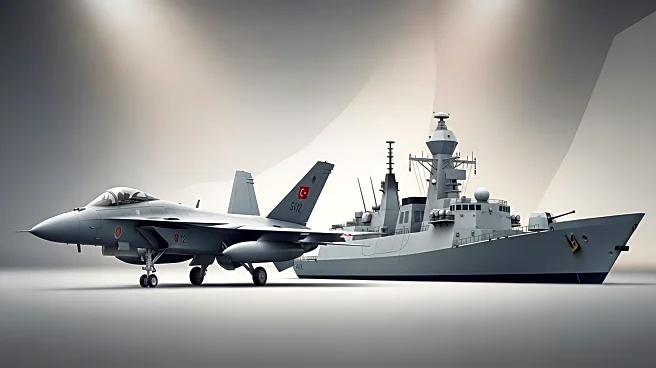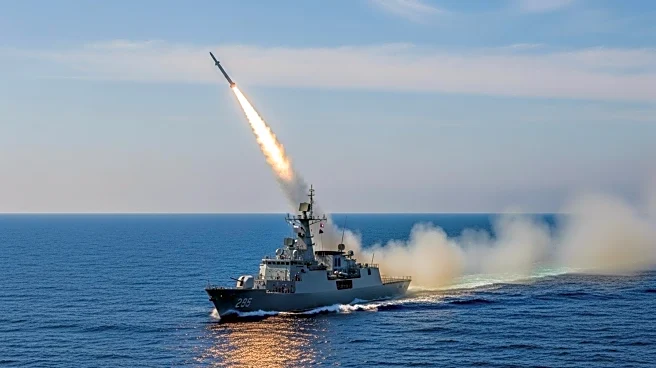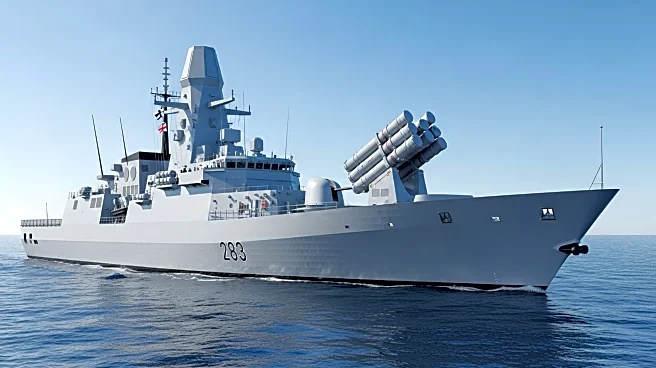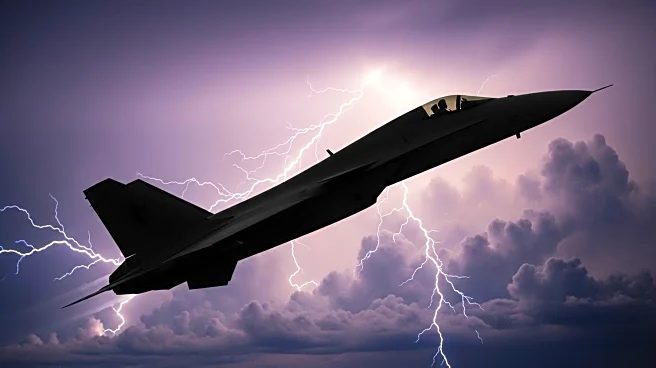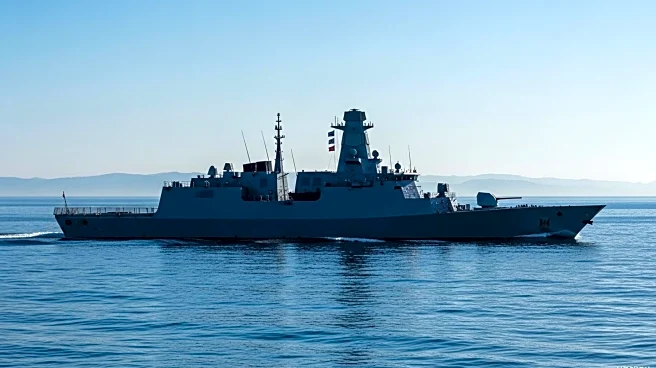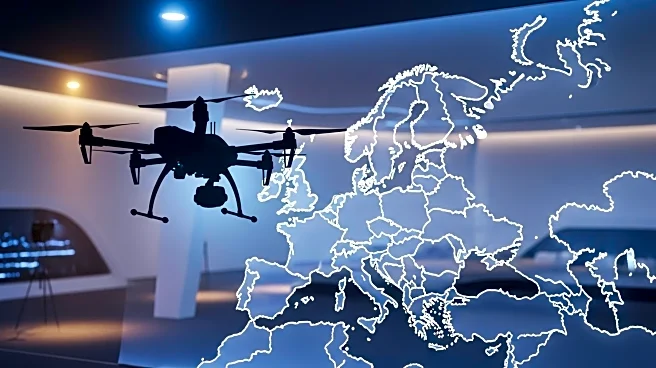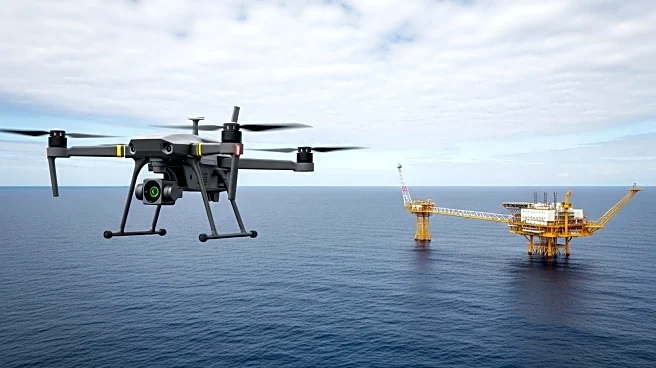What is the story about?
What's Happening?
The UK Royal Navy has declared initial operating capability (IOC) for the MBDA Sea Venom anti-ship missile, marking its readiness for operational use. This development was announced on October 2, 2025, and signifies a significant enhancement in the Royal Navy's combat power. The Sea Venom missile is now equipped on the Leonardo AW159 Wildcat HMA2 maritime helicopter, providing a lethal combination of precision, reach, and flexibility. The missile allows the Royal Navy to strike decisively against a wide spectrum of threats in maritime, coastal, and land domains. The IOC was achieved during Operation 'Highmast', a mission to the Indo-Pacific led by the HMS Prince of Wales flagship. Four Wildcats from the 815 Naval Air Squadron are armed with the Sea Venom, deployed across the Carrier Strike Group on the HMS Prince of Wales aircraft carrier, HMS Dauntless Type 45 air-defense destroyer, and Royal Norwegian Navy frigate HNoMS Roald Amundsen.
Why It's Important?
The deployment of the Sea Venom missile represents a transformational capability for the Fleet Air Arm, ensuring the Royal Navy is prepared to defend and protect NATO and allied interests both domestically and internationally. This advancement enhances the Royal Navy's ability to neutralize threats at range, thereby increasing its strategic reach and operational flexibility. The introduction of this missile system is crucial for maintaining maritime security and deterring aggression in key regions, particularly in the Indo-Pacific. It underscores the importance of modernizing military assets to address evolving security challenges and reinforces the UK's commitment to supporting global stability and defense alliances.
What's Next?
The Royal Navy's deployment of the Sea Venom missile is expected to bolster its operational capabilities in upcoming missions, particularly in the Indo-Pacific region. As the Royal Navy continues to integrate this advanced missile system, it may lead to further collaborations with allied forces, enhancing joint defense strategies. The successful deployment could also prompt other nations to consider similar upgrades to their maritime defense systems, potentially influencing global military procurement trends. Continued monitoring of the missile's performance in real-world scenarios will be crucial for assessing its impact on future naval operations.
Beyond the Headlines
The introduction of the Sea Venom missile may have broader implications for international military dynamics, particularly in terms of technological advancements in missile systems. It highlights the ongoing evolution of naval warfare capabilities and the importance of maintaining technological superiority. Additionally, the deployment could influence defense policy discussions regarding the allocation of resources towards modernizing military equipment and the strategic importance of maintaining a robust maritime presence in geopolitically sensitive regions.
AI Generated Content
Do you find this article useful?
